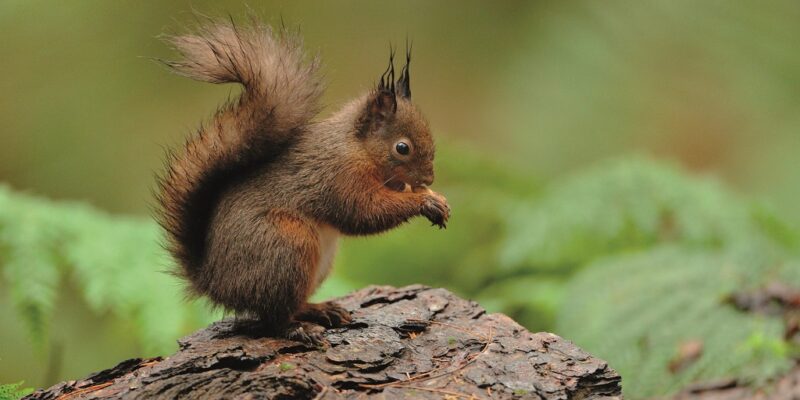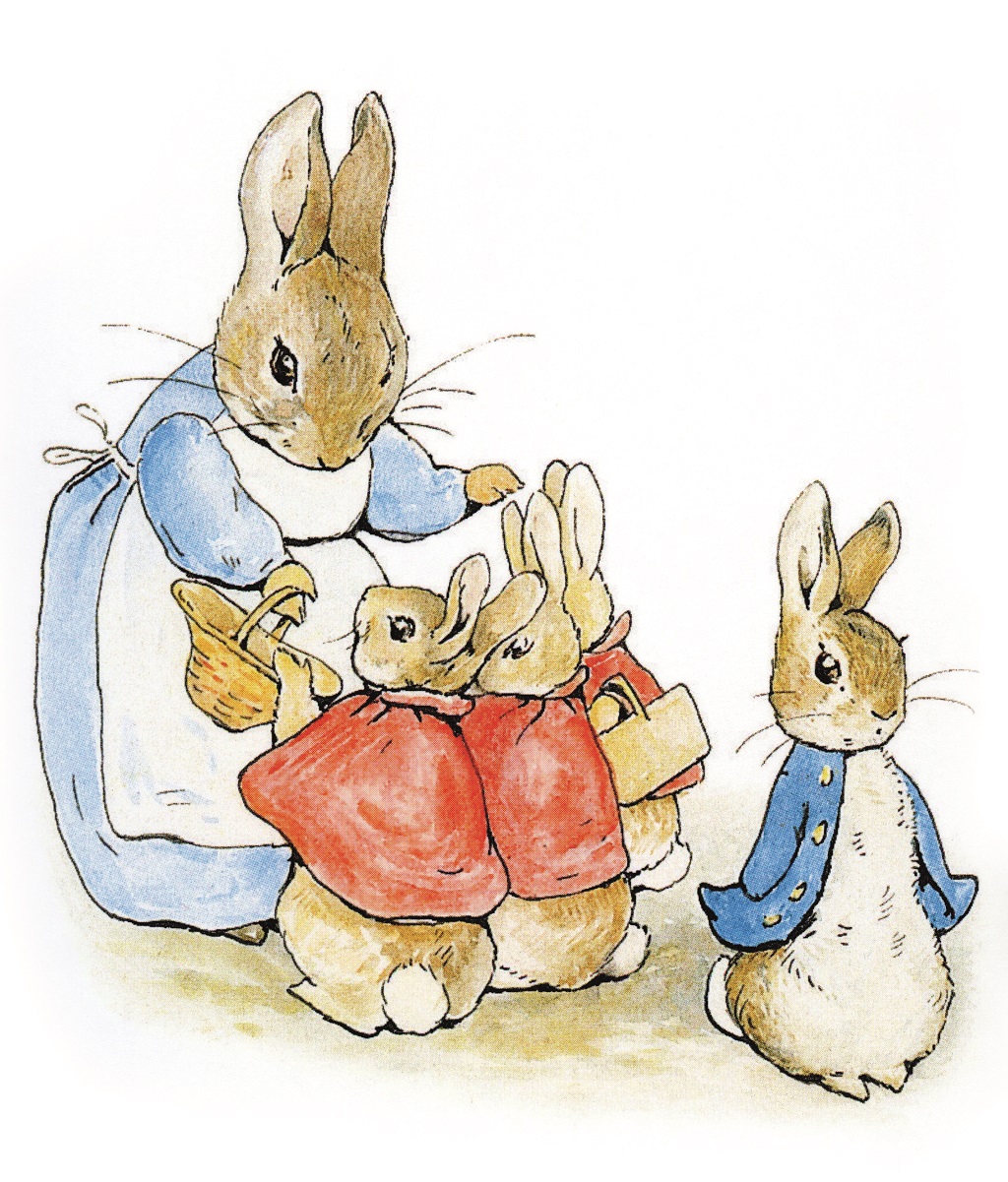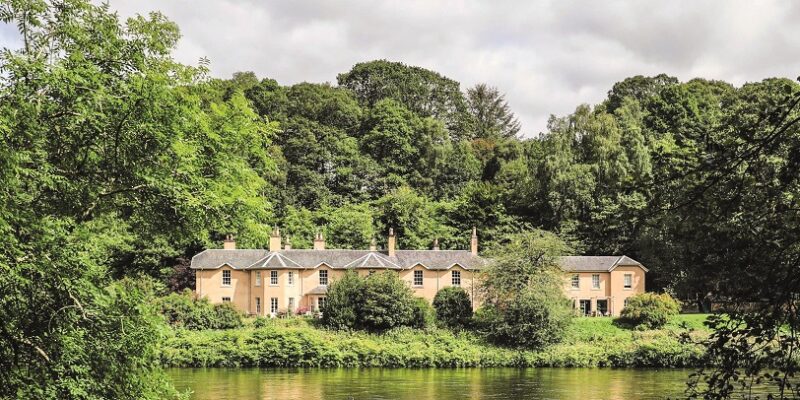Best associated with the Lake District, it was long childhood summers in Perthshire that first inspired Beatrix Potter’s beloved animal stories
MORE FROM SCOTLAND MAGAZINE
Each summer, Beatrix Potter and her family would bundle the household, pets and all, onto a train from London to Perthshire. Benjamin Bouncer, the rabbit, squirmed the whole way. They would spend three months at a country estate, entertaining friends and allowing Beatrix, later of Peter Rabbit fame, and her brother Bertram to explore the countryside. Beatrix took Benjamin for hops on a lead.
The family went to Perthshire for 11 consecutive summers from 1870, as well as a couple of times in the early 1890s. Beatrix, who was four on the first trip, loved these holidays, calling the area “home sweet home”. How different it was from her privileged but lonely upbringing in Kensington, where her father Rupert, a barrister, and her mother Helen, a dominating force, would ensure she was always supervised. “I remember every stone, every tree, the scent of the heather, the music sweetest mortal can hear, the murmuring of the wind through the fir trees,” she recalled.

This might come as a surprise. Beatrix Potter is more often associated with the Lake District, where she wrote most of her 23 children’s books, but she didn’t visit the Lakes until her teens. Her ideas were formed in central Scotland around Dunkeld and Birnam, two villages on opposite banks of the Tay.
For a sense of the scenery Beatrix called “almost theatrical and ultra-romantic”, head to The Hermitage, a stretch of forest that once provided a playground for the Dukes of Atholl. Look out for Ossian’s Hall, an 18th-century folly decorated with mirrors, as well as beavers and red squirrels among the Douglas firs.
To explore both Dunkeld and Birnam, while seeing a little more nature, follow a three-and-a-half mile trail between the two. First, wander round Dunkeld with its Gothic cathedral built in grey sandstone in the 13th century, and colourful houses dating from just after the Jacobite defeat at the Battle of Dunkeld in the 17th century. Then, from the River Tay car park, start the Birnam Oak and River Tay 1.5-hour walk (the direct route between the two villages, over the bridge, takes just 20 minutes).

Here, you’ll see two of the most literary trees in history – the Birnam Oak and Birnam Sycamore, the remains of Birnam Wood, which Shakespeare mentioned in Macbeth – as well as Eastwood House, where the Potters stayed in 1893, across the river. The Victorian villa on the Tay’s banks has nine acres of grounds and is available to rent.
It was here that Beatrix, aged 27, composed the picture-letter that would become The Tale of Peter Rabbit. “I shall tell you a story about four little rabbits whose names were Flopsy, Mopsy, Cottontail and Peter,” she wrote to Noel Moore, the son of an old governess suffering from the mumps. Released 10 years later, her ‘bunny book’, as her publishers called it, has now sold over 45 million copies.
Peter was one of Beatrix’s pets from London. Mr McGregor, the farmer who chased him out of his garden for stealing cabbages, was Scottish. He got his name and deerstalker hat from Atholl McGregor, the laird who sublet Eastwood House to the Potters, and his thin face and white beard from Charles McIntosh, the local postman and an amateur naturalist. Charles was Beatrix’s mentor: they would spend hours chatting about mushrooms, which Beatrix then drew. A collection of 25 of Potter’s sketches are at the Perth Museum and Art Gallery, a half-hour-drive away.

The day after writing to Noel, Beatrix wrote to his brother Eric. This letter was about Jeremy Fisher, a frog fishing for his supper. The animal influence is clear: Beatrix had a pet frog. But he rarely fished. Her father, however, did – at Dalguise Fishings, a one-mile double bank about 10 minutes from Eastwood House. You can visit it today to fish, but although salmon abound, you probably won’t find Jeremy. By the time Beatrix published The Tale of Mr Jeremy Fisher, just after Peter Rabbit, she had moved him from the River Tay to Esthwaite Water in the Lake District.
We know where he started, though, and Birnam is keen to pay tribute. The village owes its origins to the railway, which arrived in 1856, and was where the Potters would have alighted. The focal point is a Beatrix Potter exhibition in the Birnam Arts and Conference Centre, where Beatrix was a regular, back when it was the Birnam Institute. Today, ‘the Dalguise Pillar’ is on display, a carved 18th-century stone column with a unicorn on top. Once, this was probably a market cross. Later, it stood on the lawn at Dalguise House, where the family stayed when Beatrix was a child.

It is the closest we can get to the 18th-century country estate, now owned by a company organising outdoor adventure holidays, but it’s not the only Potter link to Dalguise. There is also Mrs Tiggy-Winkle, who, along with Peter Rabbit and Jeremy Fisher, appears as a metal sculpture in the garden next door to the Centre. The hedgehog with her “nice clean kitchen” was inspired by the Potters’ washerwoman in the area, Kitty MacDonald.
While again, one of Beatrix’s pets provided direct inspiration for the hedgehog, the one in her story shares uncanny characteristics with a less prickly being. Kitty, Beatrix remembers, had “a tiny body, brown as a berry, beady black eyes and much wrinkled”, wore “a multitude of petticoats” and dropped “bob curtsies”. In The Tale of Mrs Tiggy-Winkle, the hedgehog’s hands are “very, very brown, and very, very wrinkly”, she wears “a striped petticoat” and she makes a “bob-curtsey”. But like Jeremy Fisher, Mrs Tiggy-Winkle had moved to the Lake District by the time her book was published in 1905.
Beatrix bought Hill Top Farm in the Lake District that year with royalties from Peter Rabbit – a book that might not have come about had it not been for her time in Perthshire. She settled here, but what about Peter, Jeremy and Mrs Tiggy-Winkle? Did they ever go to Perthshire in their imagination?
Read more:
The Road Dance: An interview with Will Fletcher and John Mackay
MORE FROM SCOTLAND MAGAZINE

SCOTLAND MAGAZINE
Published six times a year, every issue of Scotland showcases its stunning landscapes and natural beauty, and delves deep into Scottish history. From mysterious clans and famous Scots (both past and present), to the hidden histories of the country’s greatest castles and houses, Scotland‘s pages brim with the soul and secrets of the country.
Scotland magazine captures the spirit of this wild and wonderful nation, explores its history and heritage and recommends great places to visit, so you feel at home here, wherever you are in the world.